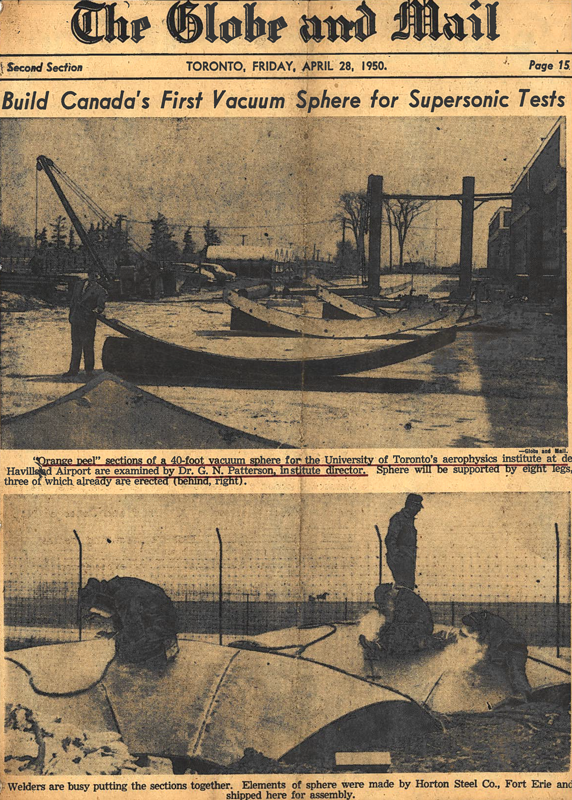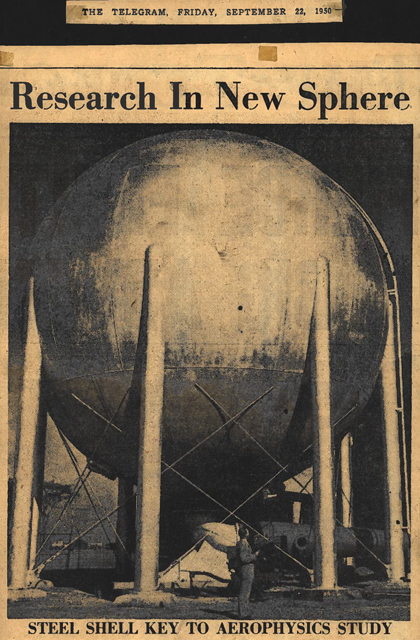A great deal of fanfare heralded the 1949 birth announcement of the University of Toronto Institute of Aerophysics (UTIA as it was then known). Over the course of a year and a half (spring 1949 to fall 1950) there were at least a dozen articles that appeared in Toronto’s 3 newspapers – The Globe & Mail, The Toronto Star, and The Telegram, the latter of which included one with the headline used as our title – and, yes, according to that article, the sandwiches were delicious!
However, the hoopla was not about the official opening of the institute per se, rather it was all about the building of Canada’s greatest new supersonic wind tunnel. UTIA and the supersonic aerodynamics research lab were headed by Dr. Gordon N. Patterson, renowned for his work, and for building a similar supersonic wind tunnel in Melbourne, Australia. The “vacuum sphere for supersonic tests” would be the first of its kind in Canada and, according to Patterson, one of the best in the world.

As you probably know, UTIA was originally located in a former RCAF hangar at de Havilland. Luckily, its ‘warehouse modern decor’ was to be refitted thanks to a $350,000 federal grant. The grant also covered the construction of the much talked about 40-foot steel sphere wind tunnel that would be located outside the building. To produce its supersonic speeds of up to Mach 10 (10 times the speed of sound), the tunnel was evacuated by a series of pumps driven by 500 hp motors to create an almost perfect vacuum. Then, “thoroughly dry and filtered free of dust, air will be sucked back into the sphere at supersonic speed through a metered orifice.”
And what, you may ask, was the purpose of this state-of-the-art towering sphere wind tunnel? According to Dr. O.M. Solandt, chairman of the Defence Research Board, the primary purpose of the lab was to be “the training of aerodynamicists for Canadian industry, the NRC and Defense Research Board, and it will also be available for applied research on supersonic aircraft, guided missiles and the ballistics of projectiles.”

The building of the sphere began in the spring of 1949 and was finally completed in the fall of 1950. When UTIA, renamed UTIAS, moved to its current location in 1958-59, the sphere moved along with it and became one of the most iconic images of UTIAS.
Have a look at the 1950 entry on our timeline to read some of the articles. And to find out more about the nail-biting drama leading up to the opening of UTIA, check out the blog post about Gerald Bull.